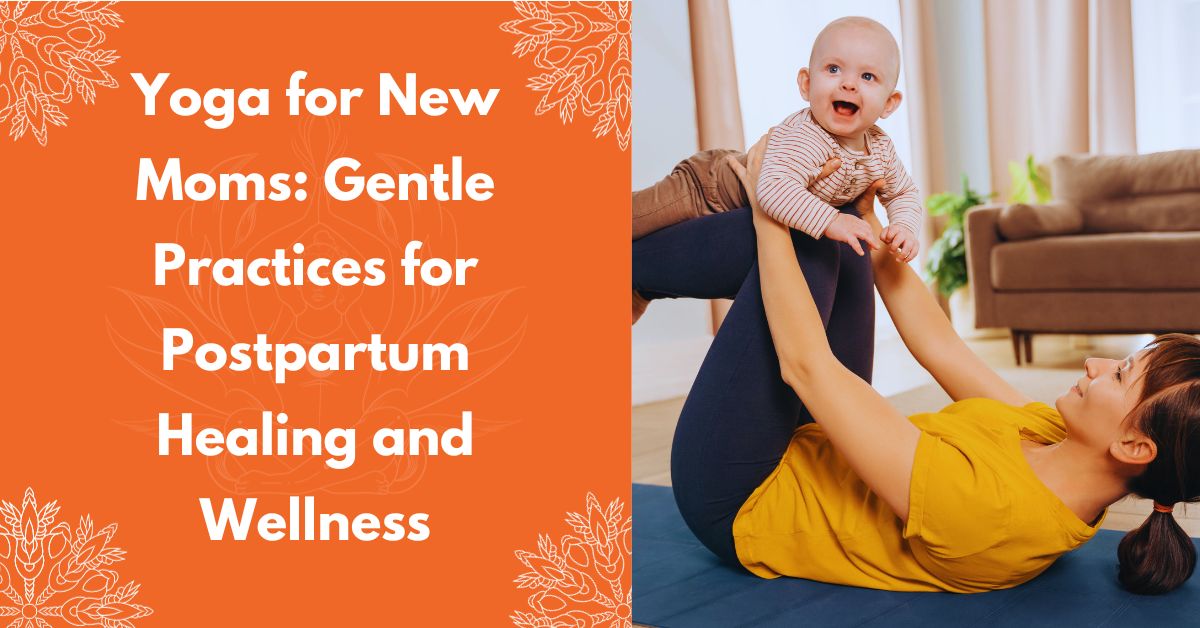
Yoga for New Moms: Gentle Practices for Postpartum Healing and Wellness
Discover the most effective postpartum healing and wellness techniques with Yoga for New Moms. Gentle practices tailored for mothers, promoting holistic well-being and recovery.
Welcoming a new life into the world is a transformative experience, but it also brings significant changes to a mother’s body and mind. Yoga for New Moms: Gentle Practices for Postpartum Healing and Wellness offers a nurturing path to recovery. In this article, we delve deep into gentle yoga practices designed specifically for new mothers, focusing on postpartum healing and overall well-being.
What is Postpartum Healing?
Postpartum healing means the recovery process after giving birth. It involves the body getting back to its normal state, dealing with emotions that come with motherhood, and adjusting to the new role as a parent. It’s about taking care of both the physical and emotional aspects after having a baby.
The Importance of Yoga for New Moms
Yoga offers a multitude of benefits for new mothers, making it a highly valuable practice during the postpartum period. Here’s why yoga holds such significance for new moms:
1. Physical Recovery:
After childbirth, a woman’s body needs time and care to heal. Yoga provides gentle exercises that can aid in the recovery process. It helps in toning muscles, particularly in the abdominal and pelvic regions, which often undergo significant changes during pregnancy and delivery.
2. Stress Reduction:

New motherhood can be stressful, with sleepless nights and the demands of caring for a newborn. Yoga incorporates breathing exercises and meditation, which are proven stress-relievers. These practices promote relaxation, reduce anxiety, and enhance overall mental well-being.
3. Restoring Energy Levels:
Lack of sleep and the constant demands of caring for a baby can leave new moms feeling exhausted. Yoga poses, especially those focused on deep breathing and gentle stretches, can help in rejuvenating the body and restoring energy levels. Even a short yoga session can provide a much-needed energy boost.
4. Emotional Balance:
Hormonal fluctuations after childbirth can lead to mood swings and feelings of sadness or overwhelm. Yoga encourages mindfulness and self-awareness, helping new moms manage their emotions better. The meditative aspect of yoga provides a calm space for emotional healing and self-reflection.
5. Bonding with Baby:
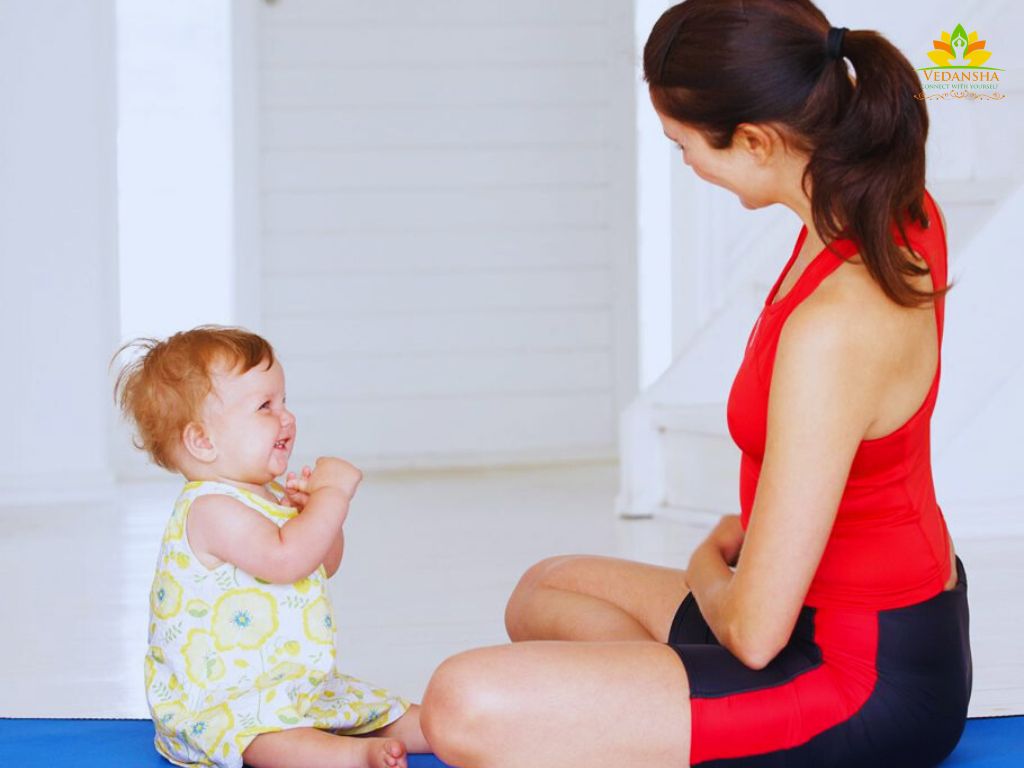
Many postpartum yoga sessions incorporate gentle movements that involve the baby. This not only fosters a stronger bond between the mother and the child but also introduces the baby to the concept of relaxation and calmness from an early age.
6. Community Support:
Attending postpartum yoga classes allows new moms to connect with others who are going through similar experiences. This sense of community and shared understanding can be incredibly reassuring and empowering during the challenging early days of motherhood.
7. Better Sleep:

Yoga practices, especially relaxation techniques and gentle stretches, can improve the quality of sleep. Better sleep is crucial for new moms to recharge and face the demands of the day with vitality.
Yoga for New Moms: Gentle Practices
Child’s Pose (Balasana):
Steps:
- Start on your hands and knees in a tabletop position.
- Sit back on your heels, stretching your arms forward and lowering your chest toward the ground.
- Rest your forehead on the mat and breathe deeply, sinking into the stretch for 5-10 breaths.
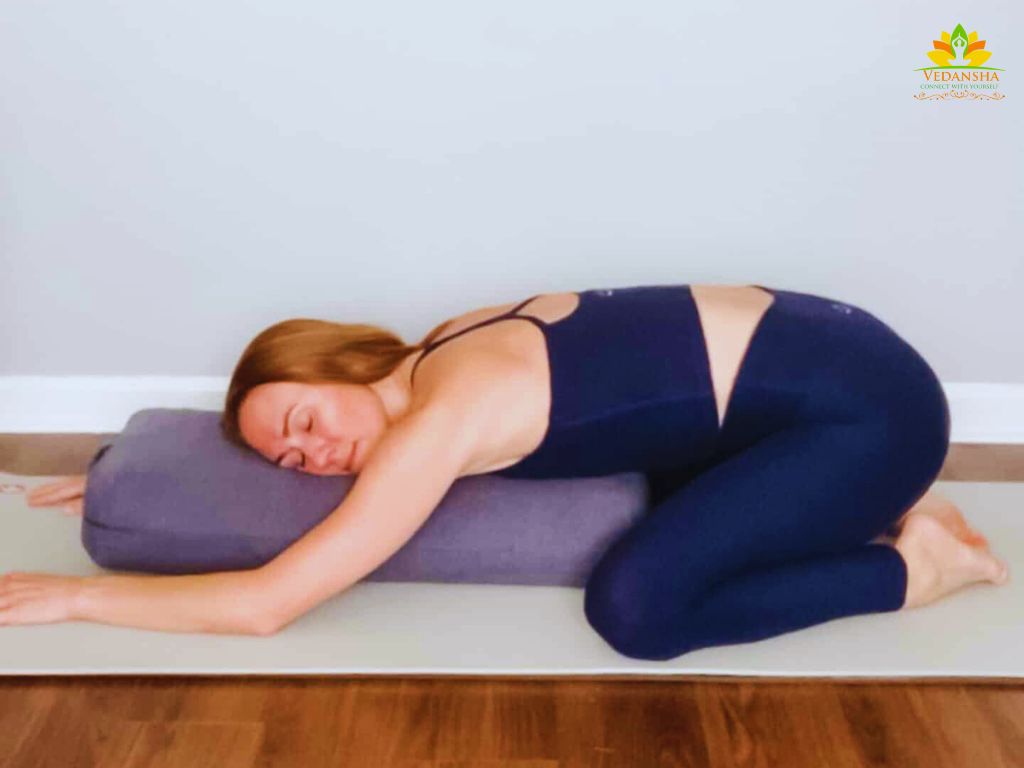
Benefits:
- Physical Relaxation: Child’s Pose gently stretches the lower back, hips, and thighs, easing tension and fatigue.
- Emotional Calm: The forward bend promotes a sense of introspection and relaxation, alleviating stress and anxiety.
Pelvic Floor Exercises:
Steps:
- Sit or lie down comfortably.
- Tighten the muscles around your vagina as if you’re stopping the flow of urine.
- Hold for a few seconds, then release.
- Repeat this contraction and release 10-15 times.
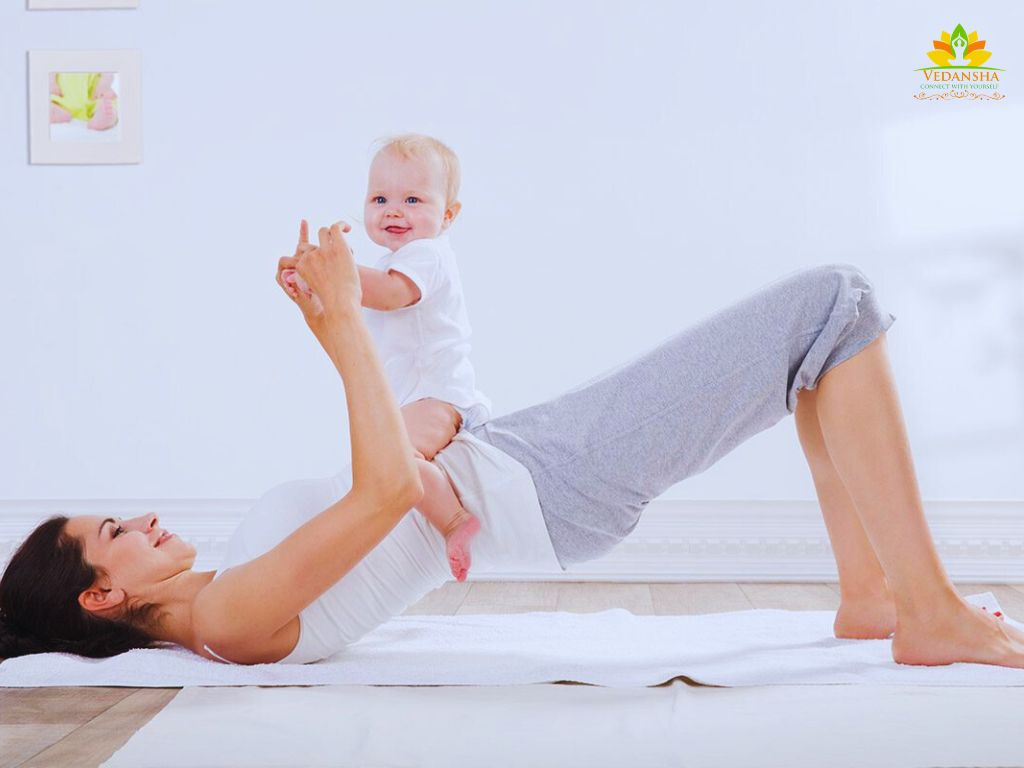
Benefits:
- Strengthens Pelvic Muscles: Helps in toning and tightening pelvic floor muscles, aiding in postpartum recovery and preventing incontinence.
- Promotes Healing: Enhances blood circulation to the pelvic region, facilitating faster healing of episiotomy or tear wounds.
Modified Plank Pose:
Steps:
- Begin on your hands and knees in a tabletop position.
- Lower your forearms to the ground, shoulder-width apart.
- Step backwards while maintaining a straight line from head to heels with your body.
- Hold the position, keeping your core engaged and breathing steadily, for 20-30 seconds.
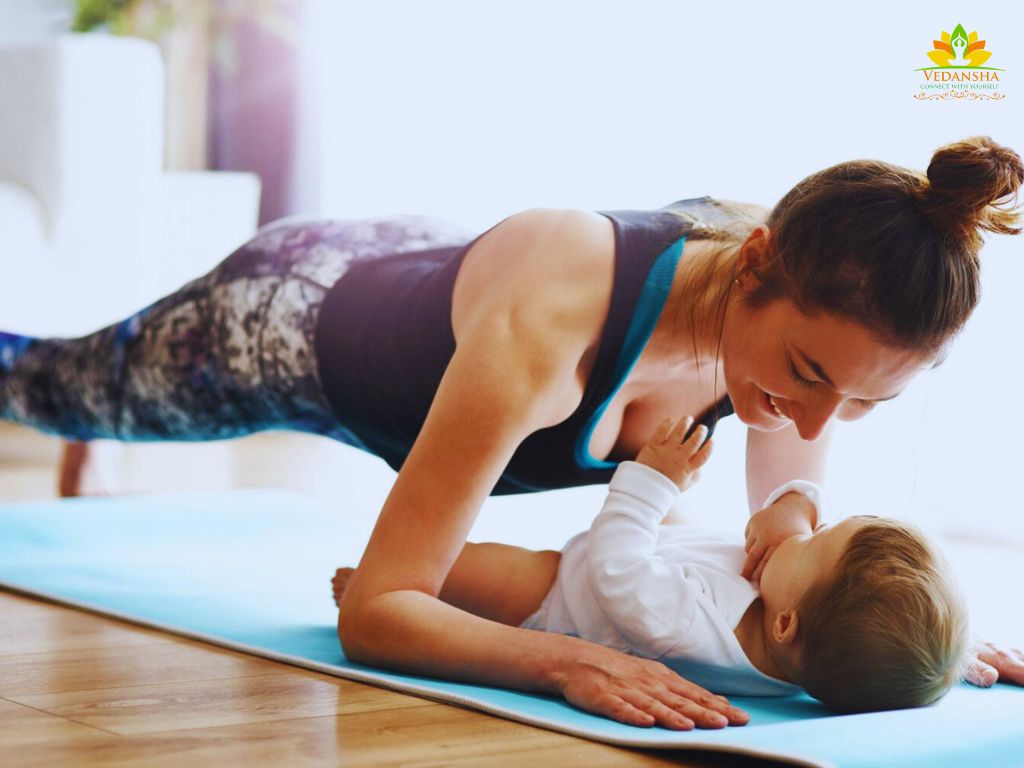
Benefits:
- Core Strength: Strengthens abdominal muscles without putting strain on the lower back, assisting in regaining core strength after childbirth.
- Improves Posture: Promotes better posture and stability, crucial for new mothers who spend hours holding and nursing their babies.
Cat-Cow Stretch (Marjaryasana-Bitilasana):
Steps:
- Start on your hands and knees in a tabletop position.
- Cow Pose: Take a deep breath in, arch your back, and lift your tailbone.
- In the “Cat Pose,” exhale, curve your spine, and tuck your chin to your chest.
- Repeat this flowing movement for 5-10 breaths.
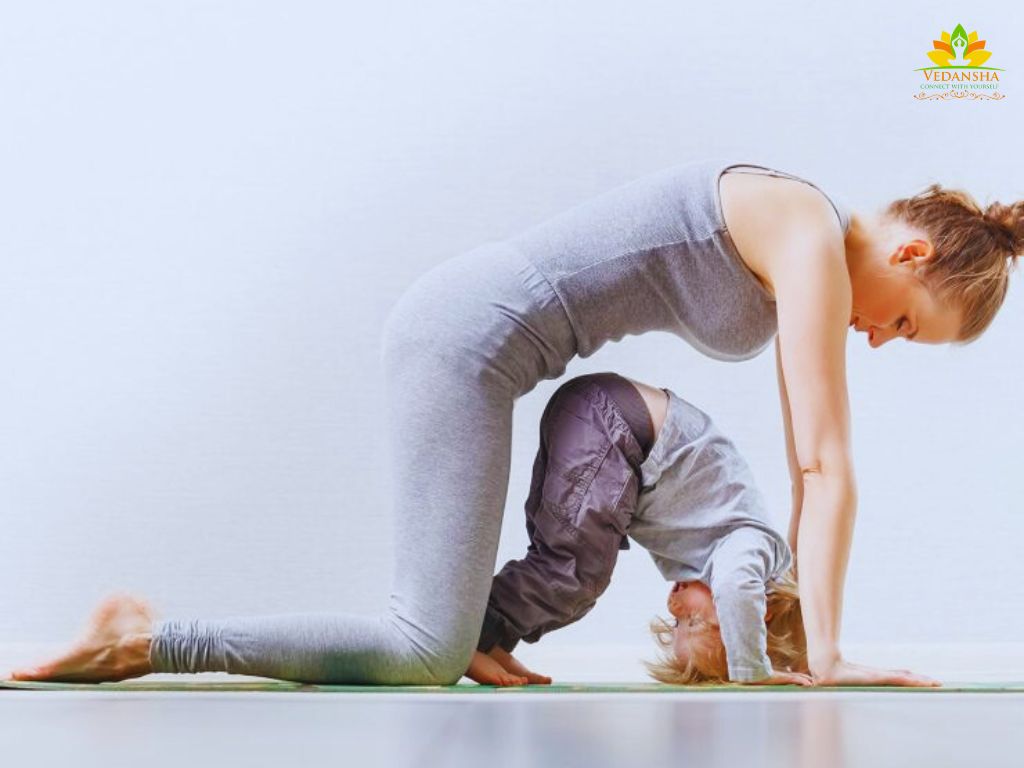
Benefits:
- Spinal Flexibility: Enhances flexibility and mobility in the spine, relieving tension in the back and neck.
- Stress Relief: The rhythmic movement and breathing promote relaxation, reducing stress and calming the mind.
Supta Baddha Konasana (Reclining Bound Angle Pose):
Steps:
- Lie on your back with your knees bent and feet together.
- Let your knees fall open to the sides, creating a diamond shape with your legs.
- Place your hands on your belly or stretch your arms out to the sides.
- Close your eyes and breathe deeply, relaxing into the stretch for 5-10 minutes.
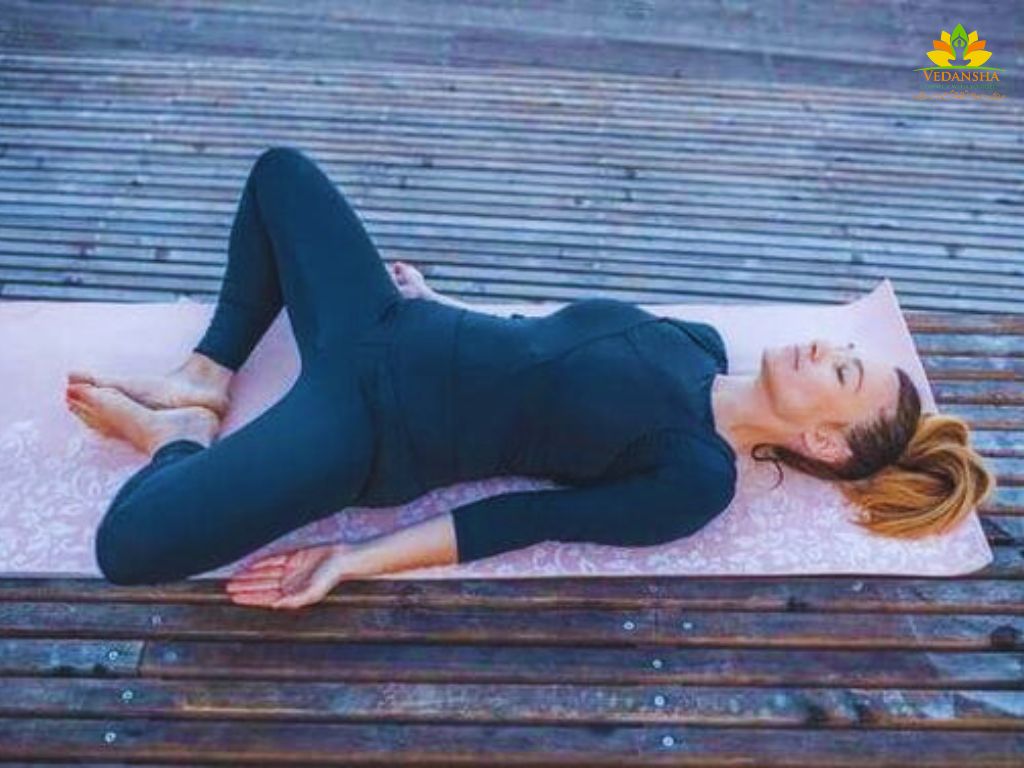
Benefits:
- Hip and Groin Release: Gently opens the hips and groin, releasing tension in the pelvic area.
- Deep Relaxation: Induces a state of deep relaxation, promoting mental tranquility and reducing anxiety.
Deep Breathing and Meditation:
Steps:
- Find a quiet, comfortable place to sit or lie down.
- By using your nose to inhale, fully expand your lungs.
- Exhale slowly, feeling your body relax with each breath.
- Focus your mind on your breath, letting go of intrusive thoughts for 5-10 minutes.

Benefits:
- Stress Reduction: Deep breathing calms the nervous system, reducing stress and promoting emotional well-being.
- Mental Clarity: Meditation enhances focus and clarity, helping new mothers find moments of peace amidst the chaos of motherhood.
Conclusion
Yoga for New Moms: Gentle Practices for Postpartum Healing and Wellness is not just a physical practice; it’s a holistic approach to embracing motherhood with grace and strength. By incorporating these gentle yoga practices, new moms can embark on a journey of healing, self-discovery, and well-being.
FAQs (Frequently Asked Questions)
1. How soon can I start practicing yoga after childbirth?
It’s advisable to wait six weeks postpartum, but always consult your healthcare provider for personalized guidance.
2. Can yoga help with postpartum depression?
Yes, yoga’s mindful practices and breathing techniques can alleviate symptoms of postpartum depression, promoting mental well-being.
3. Are there specific yoga poses for C-section recovery?
Absolutely, gentle stretches and breathing exercises can aid C-section recovery, promoting healing and reducing discomfort.
4. How long should each yoga session be?
Start with 15-20 minutes daily and gradually increase as your strength and stamina improve. Quality matters more than duration.
5. Can I practice these yoga poses during pregnancy?
Some poses are suitable for pregnant women, but it’s crucial to consult a prenatal yoga expert for safe modifications.

